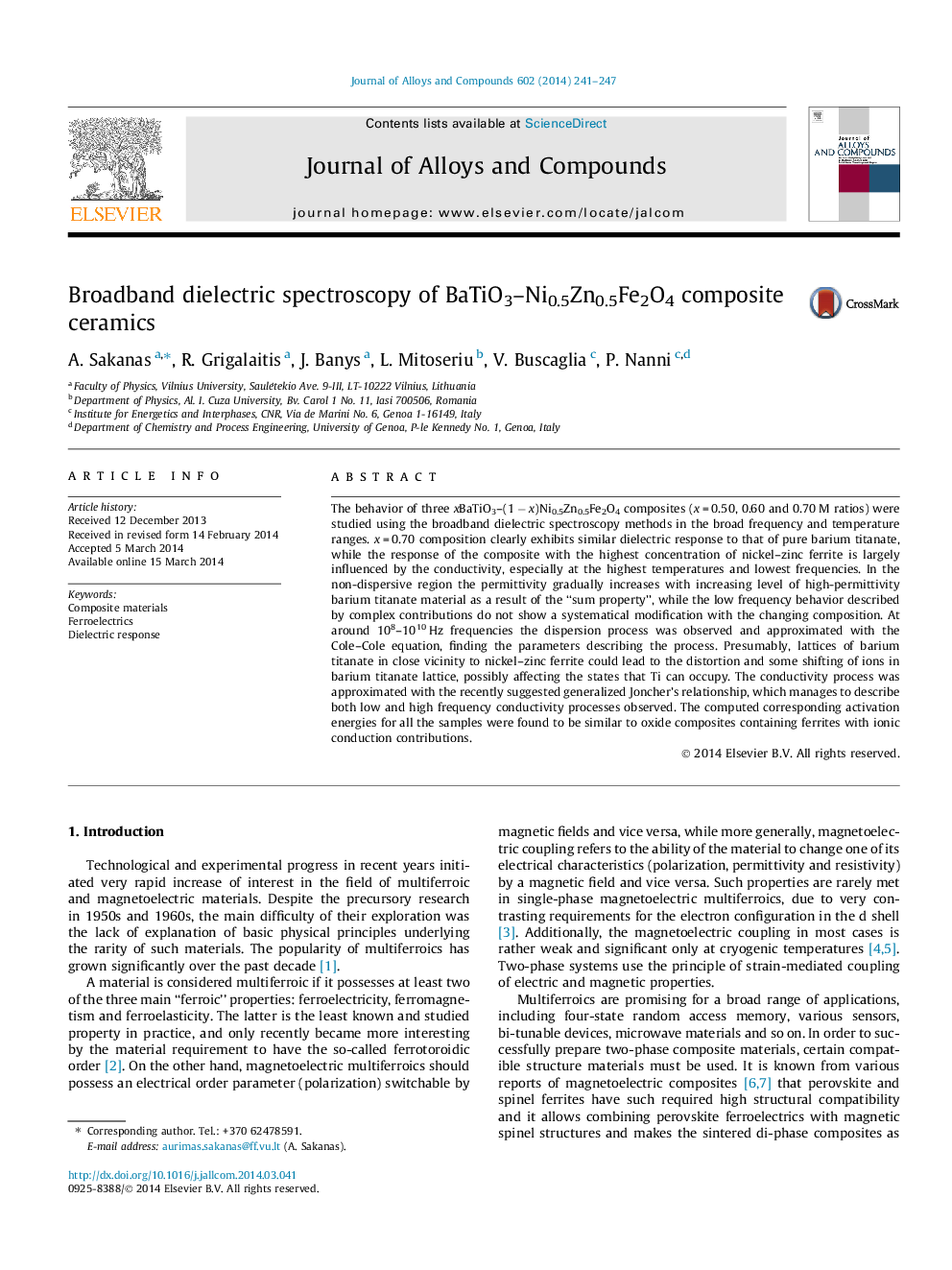| Article ID | Journal | Published Year | Pages | File Type |
|---|---|---|---|---|
| 1611042 | Journal of Alloys and Compounds | 2014 | 7 Pages |
•High frequency dielectric relaxation process is observed and interpreted.•Multiple conductivity processes analyzed by fractal Jonscher’s relationship.•Calculated conductivity activation energies fall in 0.30–0.80 eV range.
The behavior of three xBaTiO3–(1 − x)Ni0.5Zn0.5Fe2O4 composites (x = 0.50, 0.60 and 0.70 M ratios) were studied using the broadband dielectric spectroscopy methods in the broad frequency and temperature ranges. x = 0.70 composition clearly exhibits similar dielectric response to that of pure barium titanate, while the response of the composite with the highest concentration of nickel–zinc ferrite is largely influenced by the conductivity, especially at the highest temperatures and lowest frequencies. In the non-dispersive region the permittivity gradually increases with increasing level of high-permittivity barium titanate material as a result of the “sum property”, while the low frequency behavior described by complex contributions do not show a systematical modification with the changing composition. At around 108–1010 Hz frequencies the dispersion process was observed and approximated with the Cole–Cole equation, finding the parameters describing the process. Presumably, lattices of barium titanate in close vicinity to nickel–zinc ferrite could lead to the distortion and some shifting of ions in barium titanate lattice, possibly affecting the states that Ti can occupy. The conductivity process was approximated with the recently suggested generalized Joncher’s relationship, which manages to describe both low and high frequency conductivity processes observed. The computed corresponding activation energies for all the samples were found to be similar to oxide composites containing ferrites with ionic conduction contributions.
